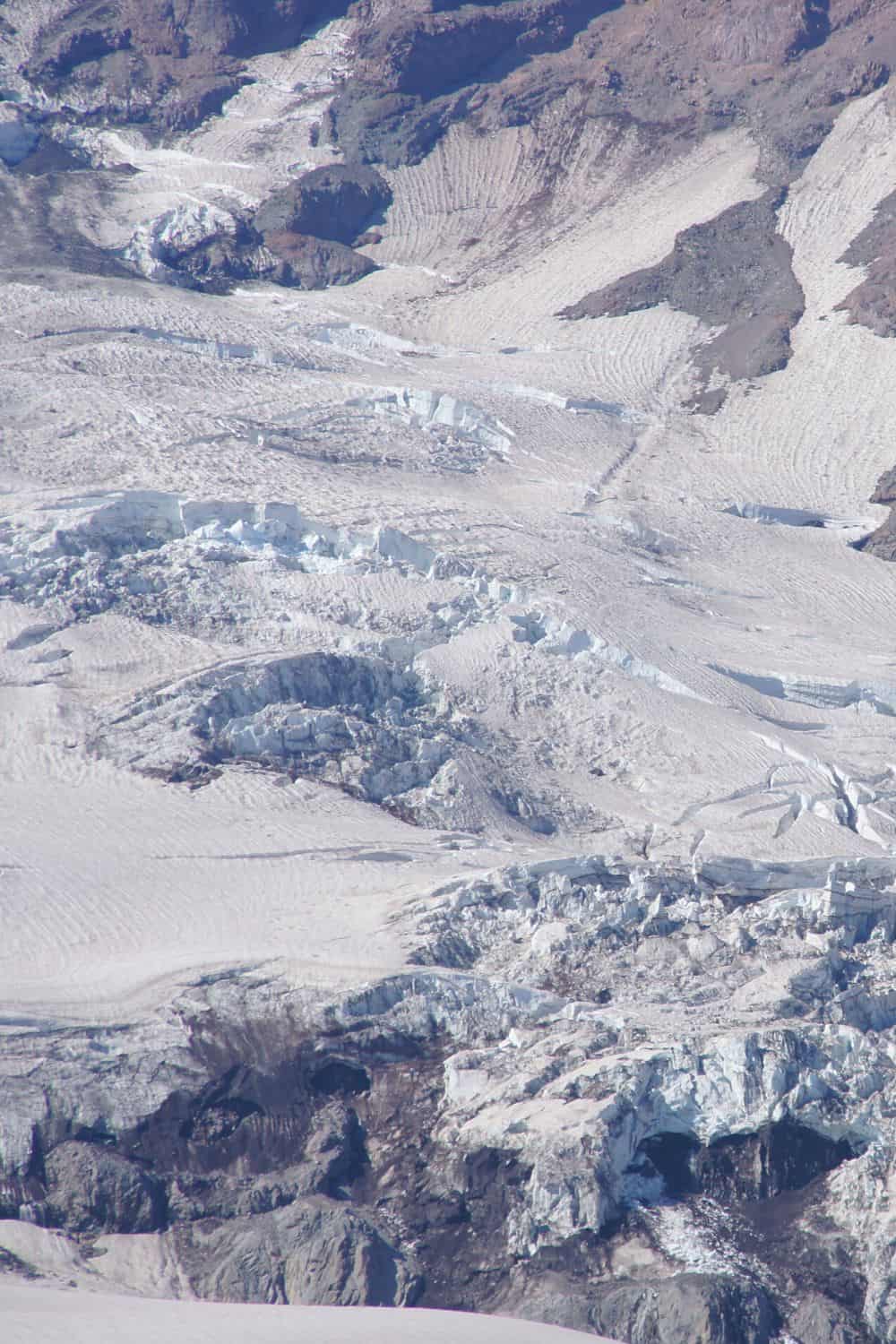
Mount Rainier National Park is located in Washington State and is home to the iconic Mount Rainier, which stands at over 14,000 feet tall. The park is also home to a number of glaciers, which are an important part of the park’s ecosystem and play a critical role in the park’s natural beauty.
There are over 25 named glaciers in Mount Rainier National Park, which cover approximately 35 square miles of the park’s landscape. These glaciers are the largest collection of permanent ice in the contiguous United States and are a vital source of water for the surrounding ecosystem.
The glaciers in Mount Rainier National Park are also a popular destination for visitors, who come to explore the park’s stunning landscape and witness the beauty of these natural wonders. Here are some of the things you should know about Mount Rainier’s glaciers.
Glacier Formation and Movement Glaciers are formed when snow accumulates in a particular area and begins to compress and harden over time. As more snow accumulates, the weight of the snow compresses the layers below, turning the snow into ice. Over time, the ice becomes thicker and begins to flow downhill, forming a glacier.
Glaciers are constantly moving, but their movement is very slow, with most glaciers moving only a few inches per day. As the ice moves, it carves out the landscape, creating valleys and other unique features.
The Glaciers of Mount Rainier National Park Mount Rainier National Park is home to a number of glaciers, including the Emmons Glacier, which is the largest glacier in the contiguous United States. The Emmons Glacier covers approximately 4.3 square miles and has a depth of over 600 feet.
Other notable glaciers in the park include the Carbon Glacier, which is the lowest-elevation glacier in the park, and the Nisqually Glacier, which is the most accessible glacier and can be seen from the park’s main visitor center.
Glaciers and Climate Change The glaciers in Mount Rainier National Park, like glaciers around the world, are vulnerable to the effects of climate change. Rising temperatures are causing the glaciers to melt at a faster rate than they are replenished by snowfall, causing the glaciers to shrink in size.
According to the National Park Service, the glaciers in Mount Rainier National Park have lost approximately 25% of their total area since the early 1900s, and many of the park’s glaciers are expected to disappear within the next few decades.
While the loss of these glaciers is certainly concerning, it’s also important to remember that glaciers have always been a dynamic part of the Earth’s ecosystem, and their growth and retreat are a natural part of the planet’s history.
Visiting the Glaciers If you’re interested in visiting the glaciers of Mount Rainier National Park, there are several options available to you. Many visitors choose to take a guided tour, which can provide you with a wealth of information about the park’s glaciers and their importance to the ecosystem.
If you’re feeling more adventurous, you can also take a hike to one of the park’s glaciers. The hike to the Nisqually Glacier is a popular option, as it’s relatively easy and provides stunning views of the glacier and the surrounding landscape.
When visiting the glaciers, it’s important to remember that these are delicate ecosystems that should be treated with respect. Visitors should always stay on designated trails and avoid walking on the glaciers themselves, as this can cause damage to the ice and potentially be dangerous.
Final Thoughts The glaciers of Mount Rainier National Park are a beautiful and important part of the park’s ecosystem. While the loss of these glaciers is a concern, it’s also an opportunity to learn more about the planet’s history and the natural processes that shape our world.
By visiting the glaciers of Mount Rainier National Park and learning about their formation, movement, and vulnerability to climate change, visitors can gain a deeper appreciation for the natural world and the importance of protecting it.
Whether you choose to take a guided tour or hike to one of the park’s glaciers on your own, be sure to take the necessary precautions to stay safe and protect the delicate ecosystem. With its stunning beauty and rich history, Mount Rainier National Park’s glaciers are a must-see for any nature enthusiast or adventurer.
Related posts:
Mount Rainier National Park, located in Washington state, is an ecological jewel surrounding a beautiful mountain range. The park has a long history as a popular natural destination. In fact, Mount Rainier National Park is one of the most visited Nat...
Mount Rainier National Park is a hiking paradise. With over 260 miles of hiking trails and a wide variety of terrain, the park offers something for hikers of all skill levels. From breathtaking mountain vistas to lush forests, wildflower me...
Mount Rainier National Park camping is an activity enjoyed by many people. However, it is also a way to get away from the demands of everyday life. By taking time out to camp, you can embrace nature and really appreciate the beauty of the stars and t...
Mount Rainier National Park is a breathtaking destination located in the state of Washington, USA. It is named after the highest peak in the Cascade Range, Mount Rainier, which rises to an elevation of 14,411 feet. The park is home to glaci...